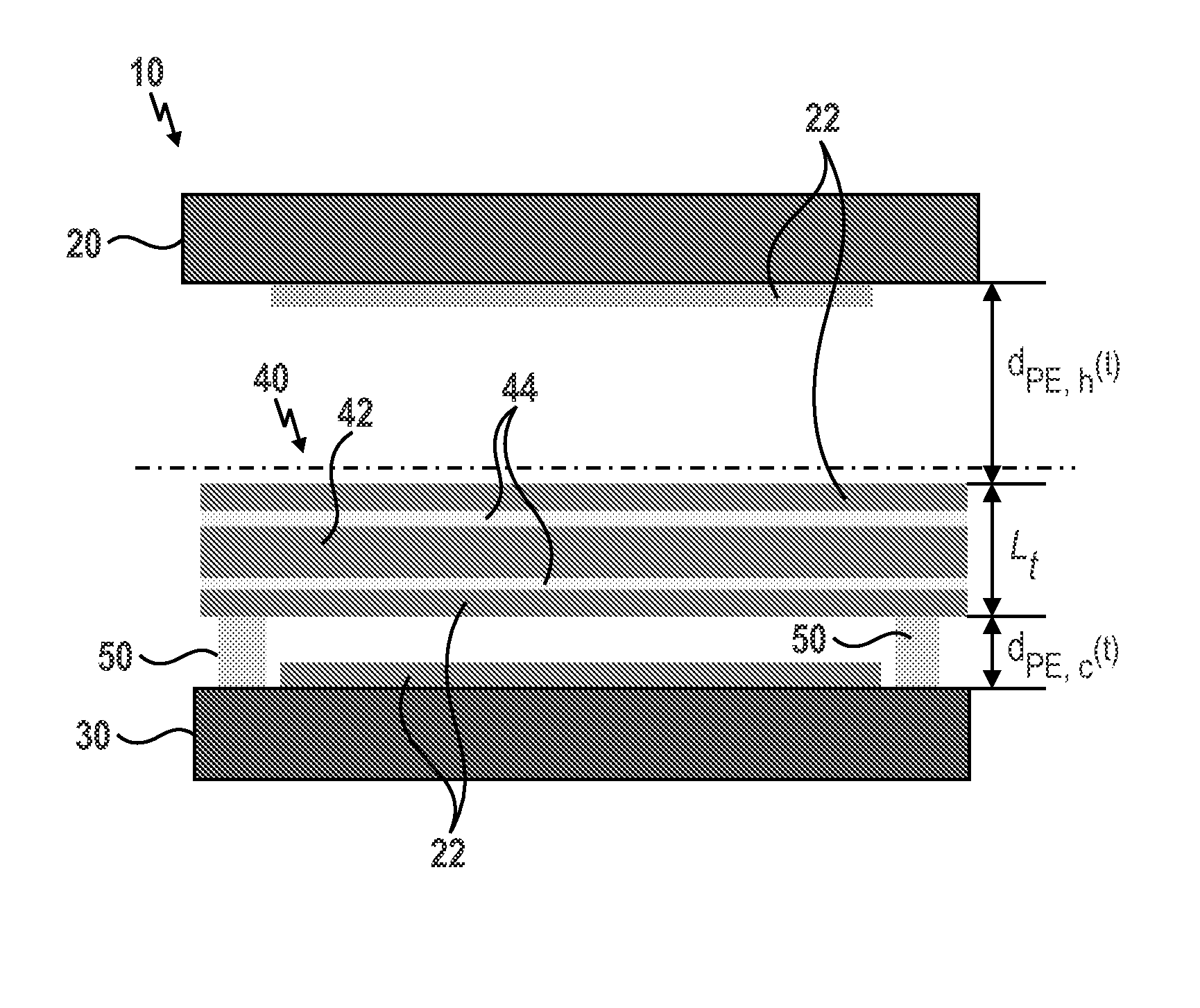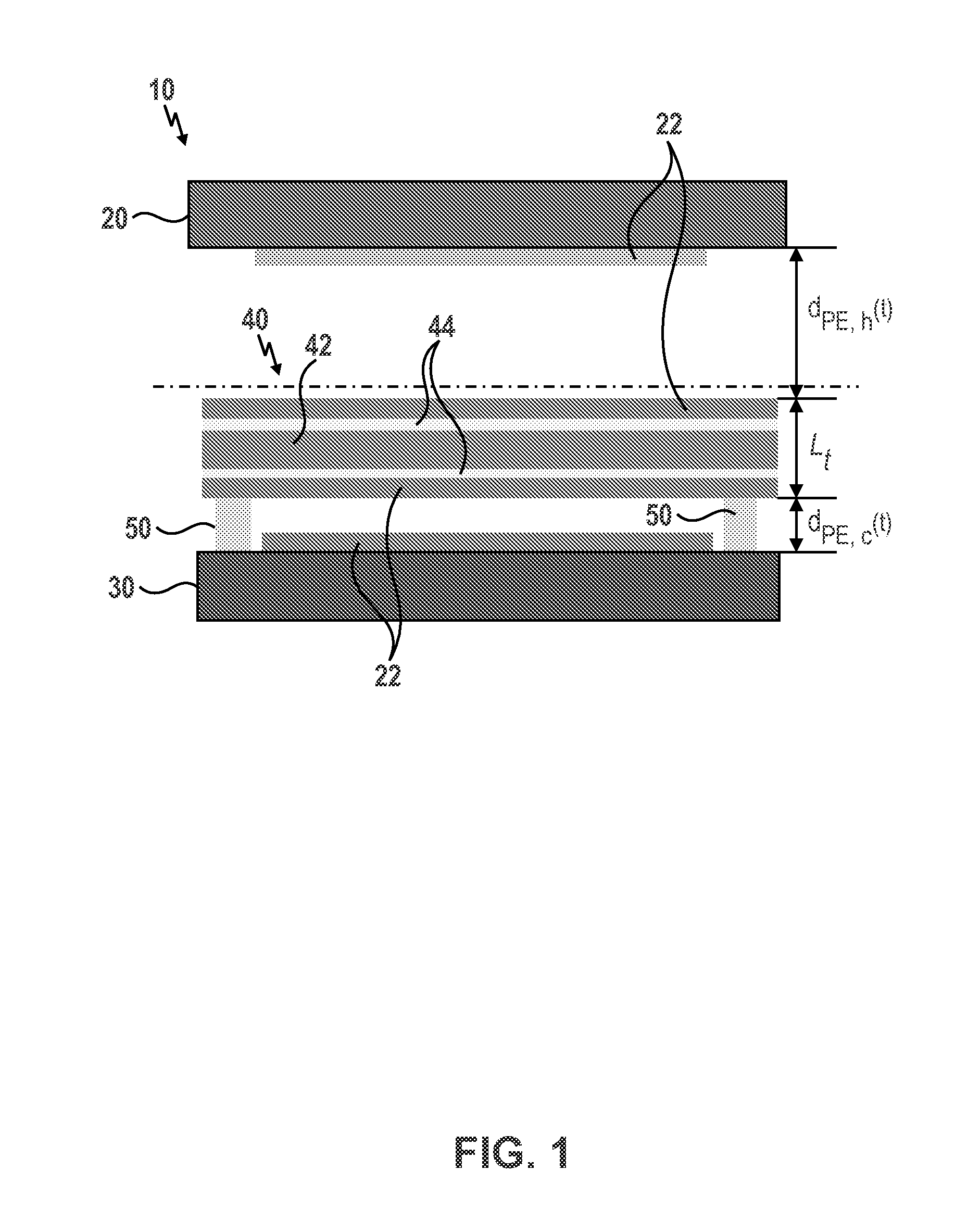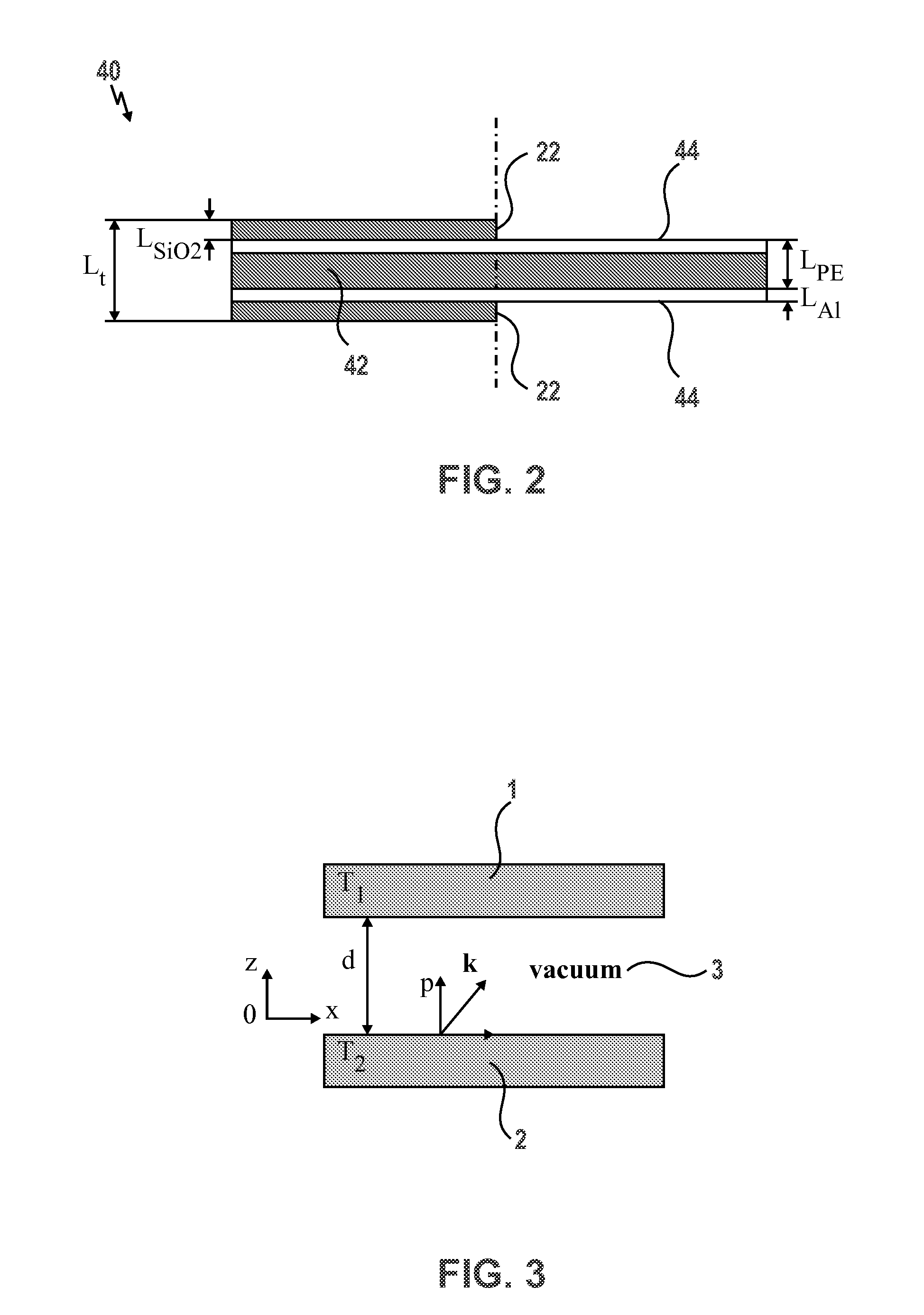Direct conversion of nanoscale thermal radiation to electrical energy using pyroelectric materials
a technology of pyroelectric materials and nano-scale thermal radiation, which is applied in the direction of generators/motors, thermoelectric devices with dielectric constant thermal change, electric devices, etc., can solve the problems of low-grade waste heat, difficult to reuse, and significant energy resource consumption loss, so as to enhance the radiative heat flux, minimize both friction on the oscillating pe plate and heat loss to the surrounding.
- Summary
- Abstract
- Description
- Claims
- Application Information
AI Technical Summary
Benefits of technology
Problems solved by technology
Method used
Image
Examples
Embodiment Construction
terial film made of 60 / 40 P(VDF-TrFE) with SiO2 absorbing layers as a function of frequency where the cold plate is held at Tc=273 K and the hot plate is held at Th=388 K.
[0029]FIG. 12 illustrates the maximum and minimum temperatures of oscillation of the PE plate comprising the PE material film made of 0.9 lead magnesium niobate-lead titanate (0.9 PMN-PT) with SiO2 absorbing layers as a function of frequency where the cold plate is held at Tc=283 K and the hot plate is held at Th=383 K.
[0030]FIG. 13 illustrates the efficiency ratios η / ηCarnot and η / ηCA as a function of frequency for one embodiment of the PE plate comprising the PE material film made of a single 60 / 40 P(VDF-TrFE) film and another embodiment of the PE plate comprising multiple PE material films made of 0.9PMN-PT.
DETAILED DESCRIPTION
[0031]Described herein is a pyroelectric energy converter 10 for use in the direct conversion of nanoscale thermal radiation to electrical energy using pyroelectric materials. The converte...
PUM
 Login to View More
Login to View More Abstract
Description
Claims
Application Information
 Login to View More
Login to View More - R&D
- Intellectual Property
- Life Sciences
- Materials
- Tech Scout
- Unparalleled Data Quality
- Higher Quality Content
- 60% Fewer Hallucinations
Browse by: Latest US Patents, China's latest patents, Technical Efficacy Thesaurus, Application Domain, Technology Topic, Popular Technical Reports.
© 2025 PatSnap. All rights reserved.Legal|Privacy policy|Modern Slavery Act Transparency Statement|Sitemap|About US| Contact US: help@patsnap.com



